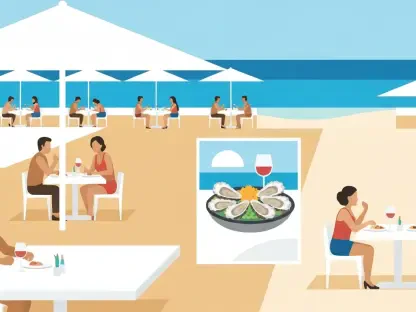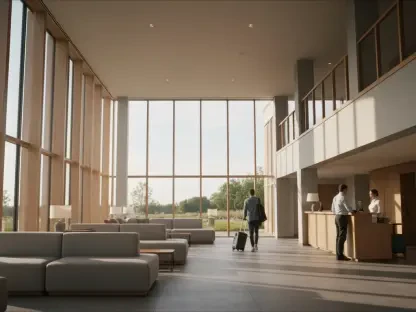Katarina Railko has spent a decade shaping guest experiences across travel, entertainment, and large-scale events. Her vantage point blends operational rigor with a curator’s feel for culture, making her a keen interpreter of how hotels evolve with their cities. As INNSiDE by Meliá Manchester marks 10 years, she unpacks the property’s refreshed premium rooms and suites—52 to date, including eight Townhouse Suites on the top two floors—through the lens of sustainability, design, and home-like comfort that honors the brand’s “Stay Curious” ethos.
Marking 10 years in Manchester, what moment convinced you to reinvest now, and how did guest feedback shape the brief? Share one anecdote from the earliest days and one from this refurbishment, plus any metrics that proved demand for upgraded premium rooms.
The 10-year milestone was our line in the sand—Manchester has transformed so much, and we wanted the hotel to mirror that momentum. Guest feedback consistently asked for more seamless tech and premium views that felt celebrated rather than incidental, which became our brief’s spine. I remember our earliest days when a storm rolled over the city and guests gathered at the windows just to watch—those floor-to-ceiling panes became an unofficial attraction. This time around, when we opened the first wave of refurbished rooms, a repeat guest told us, “It finally feels like the room grew around the view,” which was precisely the aim. Demand spoke clearly: the premium categories—City View, Studio Suites, and the eight Townhouse Suites—were already among our quickest to be requested, and the 52-room refresh reflects that pull without us having to over-explain it.
You’ve refreshed 52 rooms so far, including City View, Studio Suites, and eight Townhouse Suites on the top two floors. What differentiates each tier in design and experience, and how do guests respond? Give examples, occupancy or ADR shifts, and a story from a recent stay.
City View rooms put the skyline front and center with layouts that push furniture low and light to keep sightlines clean. Studio Suites add space to spread out—great for business travelers who want a work nook that doesn’t feel like an afterthought. The Townhouse Suites on the top two floors are about ritual and pause: an entry moment, a living zone to linger, and an unbroken panorama. Guests respond with longer stays and more celebrations—one couple checked into a Townhouse Suite just to watch the city lights turn on at dusk; they told us they postponed dinner because “the room was the show.” While we don’t share ADRs publicly, the premium tiers are tracking above our broader mix, and the requests for top floors come in first.
The Townhouse Suites boast panoramic skyline views. How did the design team frame those views in layout, materials, and lighting? Walk us through the design choices step by step, and share before-and-after guest satisfaction scores or review snippets that capture the impact.
We started by mapping the window wall as the focal plane, then pulled large pieces toward the interior so nothing competes with the horizon. Materials stay calm—natural-toned flooring and soft, layered textiles that don’t glare in daylight—so the city remains the hero. Lighting is tiered: subtle cove light to bathe the ceiling, warm bedside lamps for evening texture, and dimmable accents that avoid reflections at night. The palette is intentionally quiet, with tactile finishes guests want to touch rather than just look at. One post-stay note captured it best: “I woke up to Manchester without lifting my head.” That sentiment is what we wanted to hear.
You added bedside USB and USB-C ports and smart TVs with Chromecast. What usage patterns have you observed since launch, and how did you decide port placement and TV integration? Share metrics on streaming adoption, guest support tickets, and any unexpected tech behaviors.
We placed ports exactly where guests instinctively reach—bedside—to avoid cable acrobatics at 11 p.m. The Chromecast integration was chosen for simplicity: tap, cast, done; no nested menus. We’re seeing guests stream their own content more and channel surf less, which reduces calls to the desk because it feels familiar. An unexpected behavior is co-watching—guests casting from multiple devices during get-togethers in Studio Suites—which the system handles smoothly. Support tickets haven’t spiked since launch; if anything, having both USB and USB-C has cut down the “forgot my adapter” requests.
Some fixtures were repurposed to cut waste. Which items did you salvage, how were they refurbished, and what criteria guided keep-versus-replace decisions? Provide waste diversion percentages, cost savings, supplier collaboration details, and one lesson you’d apply in the 2026 phase.
We kept solid pieces with good bones—select case goods and hardwearing frames—and refreshed them with new finishes that align with the updated palette. Our keep-versus-replace test was simple: durability, aesthetic fit, and guest touchpoints. If an item felt new to the touch and looked cohesive, we refurbished; if it compromised the experience, we replaced. Suppliers worked with us on low-VOC finishes and careful removal, so fewer items ended up as waste. The big lesson for 2026 is to pre-identify salvage candidates room by room so we can protect, refinish, and reinstall faster without compromising the schedule.
You’re partnering with BlackJack Brewery for local craft beers. How did you curate the selection to reflect Manchester’s beer culture, and what’s been the guest response? Give sales or attachment-rate data, tasting feedback, and a story of a guest discovering a new favorite.
We leaned into beers that tell a local story—approachable styles with character so business and leisure guests can both say, “I get this.” The lineup changes with seasonality to keep curiosity alive, and our team talks about flavor notes the way we talk about rooms—balance, texture, finish. Response has been enthusiastic, with guests trying something local “just because” and then coming back for it the next night. One traveler arrived late, asked for a city tip at the bar, and left with a BlackJack in hand; the next day he told us it turned into his walking tour companion.
The interiors balance contemporary style and homely warmth. What specific color palettes, textures, and finishes deliver that feel for both business and leisure travelers? Describe a room from door to window, include sourcing details, and share post-stay survey metrics that validate the choices.
From the door, you step onto natural-toned flooring that feels grounded, then your eye moves to a calm, contemporary palette—mid-tone neutrals with soft contrast so screens and sunlight can coexist. Textures do the heavy lifting: matte cabinetry, tactile upholstery, and bedding that feels crisp but relaxed. We sourced finishes to align with Meliá’s sustainability commitments, prioritizing low-emission materials and long-wearing surfaces. The journey ends at floor-to-ceiling windows where fabric weights control daylight without stealing the view. Post-stay notes frequently call the rooms “modern but cozy,” which is exactly the duality we wanted.
Natural-toned flooring and floor-to-ceiling windows were emphasized. How do these materials perform on sustainability, durability, and acoustics in a busy city hotel? Provide supplier specs, maintenance routines, lifecycle projections, and any noise-complaint or replacement-rate changes since installation.
We selected flooring with robust wear layers and low-emission credentials to meet sustainability and maintenance goals. Daily care is simple—light cleaning and targeted spot treatment—which keeps resources down and rooms back in service quickly. The combination of underlayment and soft furnishings helps with acoustics, while the glazing in those windows tempers city noise without dimming the panorama. Early indications show a steadier appearance over time and fewer touch-ups, which supports our lifecycle goals. Guests remark on the calm even when the city is lively, which is the best acoustic validation.
Meliá aims to remain Europe’s most sustainable hotel chain. How does this project map to that mission in concrete terms? Break down certifications pursued, carbon or water reductions achieved, procurement standards used, and the governance process that verifies compliance at property level.
We aligned every material and finish with Meliá’s sustainability commitments, prioritizing low-impact, durable choices and minimizing waste through repurposing. Procurement followed clear standards on emissions and responsible sourcing, and contractors worked within that framework. On property, our governance rhythm includes pre-install checks, post-install audits, and ongoing tracking against brand sustainability criteria. It’s not just about what we buy but how it performs in daily operations—less waste, thoughtful energy use, and guest comfort that doesn’t cost the planet.
Garry Fortune said the goal is a modern, welcoming space that feels like home. What three touchpoints most deliver that “home away from home,” and how did you test them? Share prototype iterations, guest trial results, and one unexpected tweak that made a big difference.
First, effortless tech—bedside USB and USB-C plus Chromecast that works the way people live at home. Second, a calming palette with tactile layers that invite you to exhale the moment you arrive. Third, functional layouts that make sense—places to drop your bag, brew a coffee, and sink into a chair angled toward the view. We prototyped room mock-ups, invited guests and team members to “live” in them, and iterated on feedback. The unexpected win was shifting a chair by a few degrees toward the window; it changed how people used the space and how often they lingered.
The brand’s “Stay Curious” ethos drives local experiences. Beyond the beer partnership, what neighborhood collaborations are live or planned, and how do guests discover them? Outline the guest journey from check-in to participation, provide uptake metrics, and tell a standout guest story.
We curate experiences that feel rooted—think culture-forward suggestions and neighborhood highlights that guests can walk to. At check-in, the team introduces what’s on, and in-room compendiums connect dots between the city and the hotel. Guests discover options, pick what fits their mood, and our team helps with directions and timing. One guest turned a quick business trip into an evening of local discovery after a simple nudge from the front desk; the next morning they told us, “I saw a different Manchester than the one on my calendar.” That’s the “Stay Curious” spirit in action.
The remaining bedrooms will be refurbished in Q1 2026. What’s the rollout plan by floor and room type, and how will you limit disruption? Give timelines, contractor sequencing, guest communication scripts, KPIs for success, and one risk you’re monitoring with mitigation steps.
We’ll phase by floor stacks and room types to keep capacity available, concentrating noisy work during limited daytime windows. Contractors are sequenced to move like a relay—demo, finishes, tech install—so rooms return to inventory quickly. Guests will receive clear pre-arrival notes, on-site updates, and alternative quiet zone options as needed. Success looks like on-time delivery, strong guest sentiment through the works, and rooms returning to service smoothly. The risk we’re watching is supply timing; our mitigation is early procurement on long-lead items and flexible scheduling to protect Q1 2026 delivery.
Do you have any advice for our readers?
Start with what your guests reach for first—power, light, and sightlines—and build everything else around those moments. Let your city’s character do some of the storytelling; when you frame the view and curate local touches, the room carries its own narrative. Treat sustainability as a design constraint that sparks better ideas, not as an afterthought. And test in real life—watch how people move, sit, plug in, and unwind; the smallest adjustment can unlock the biggest sense of home.









